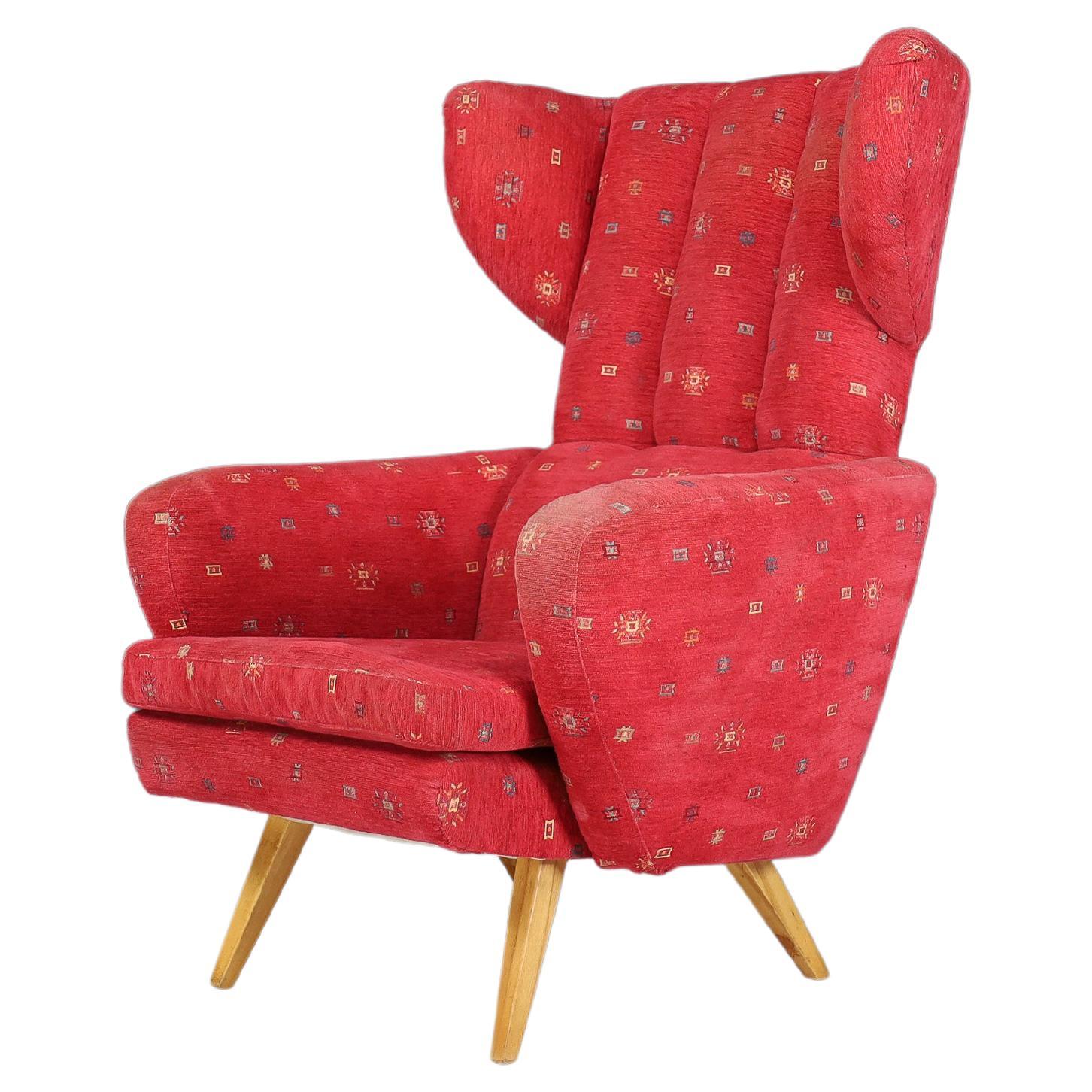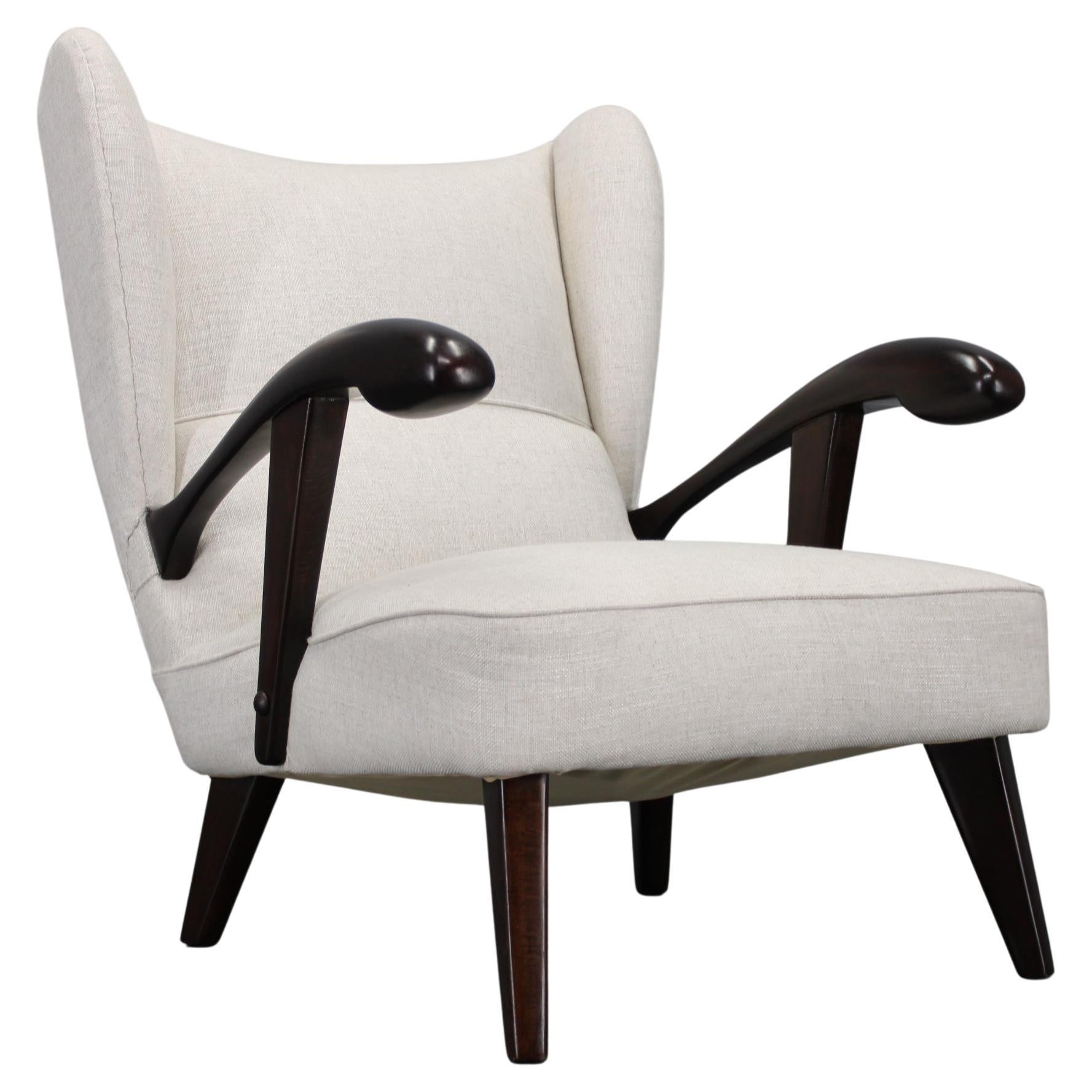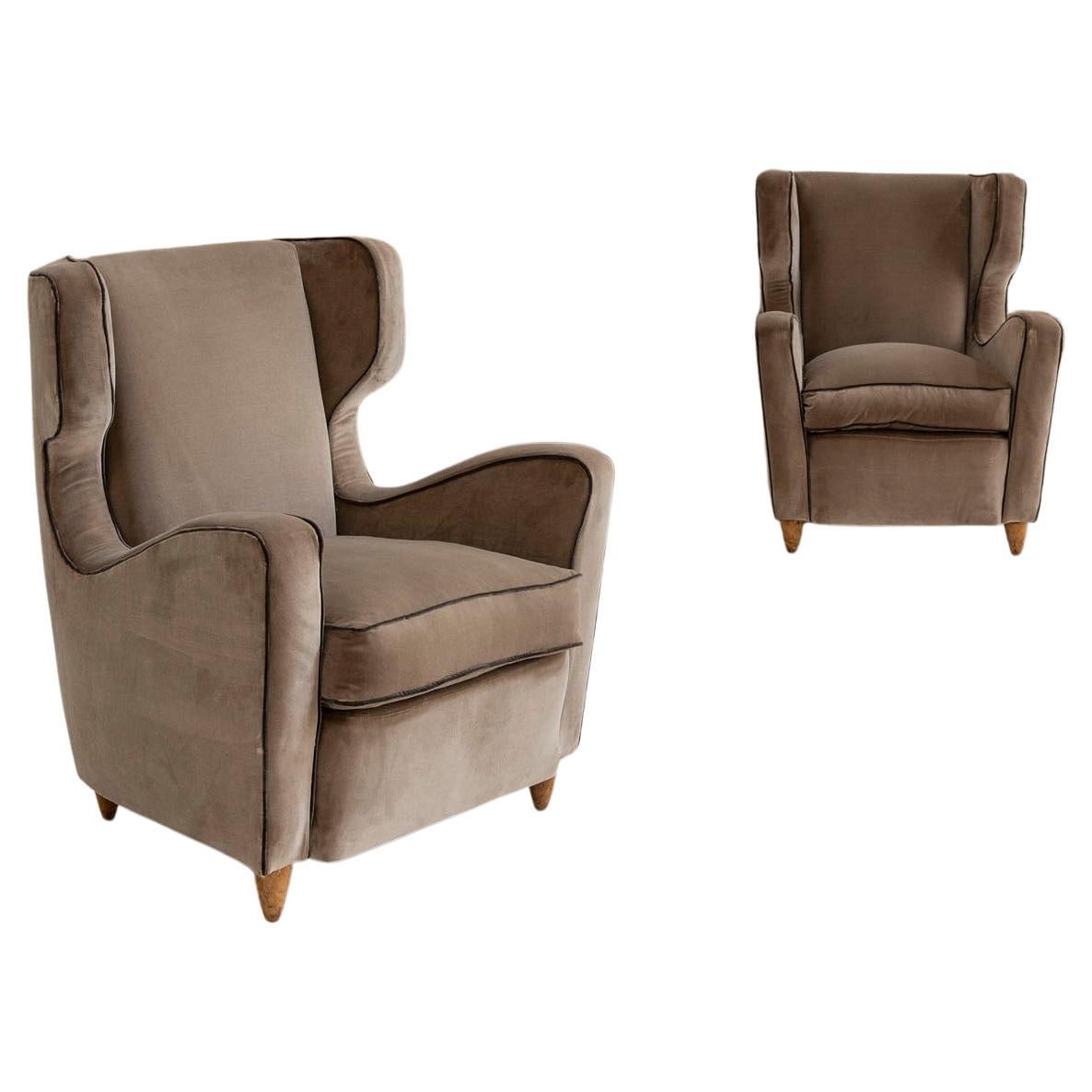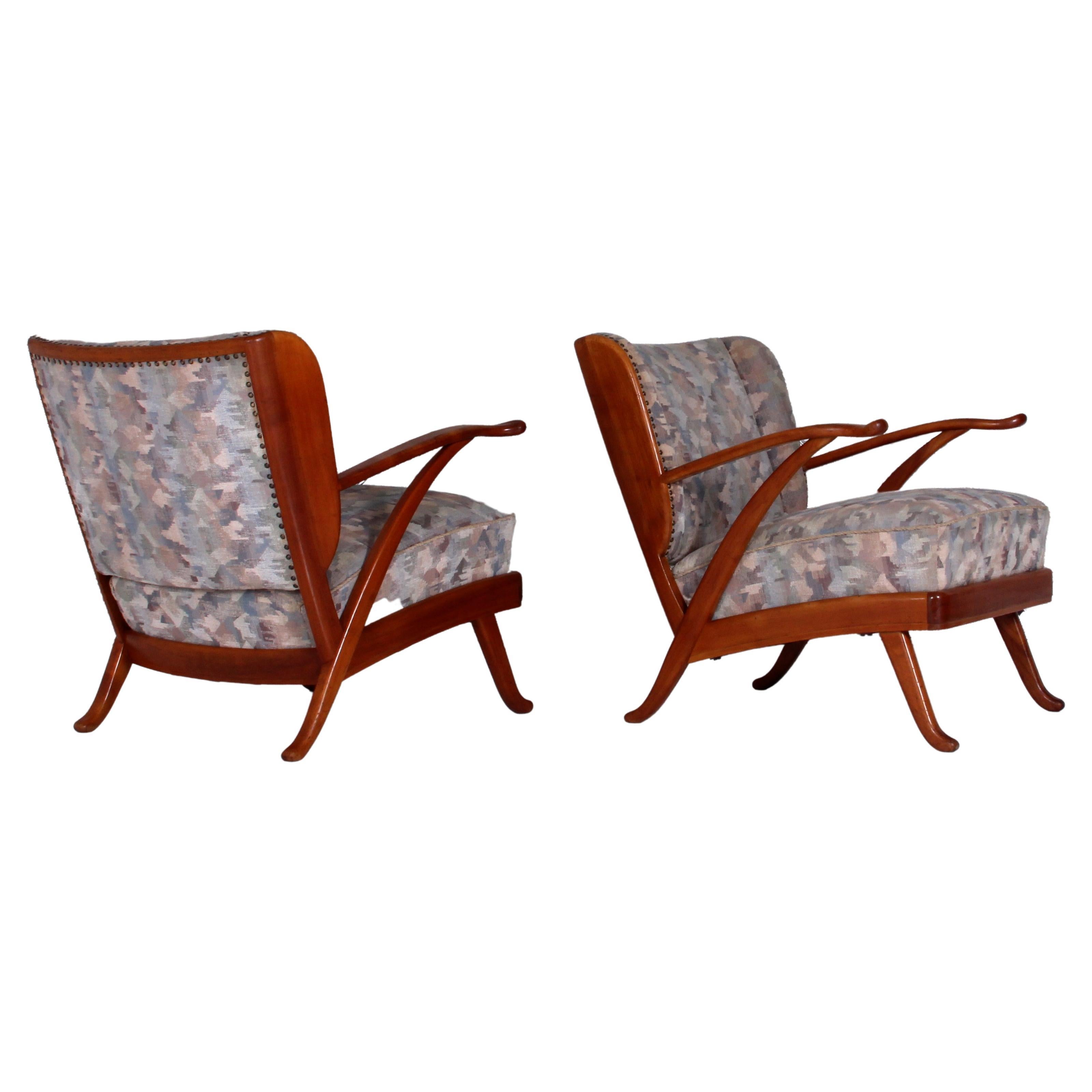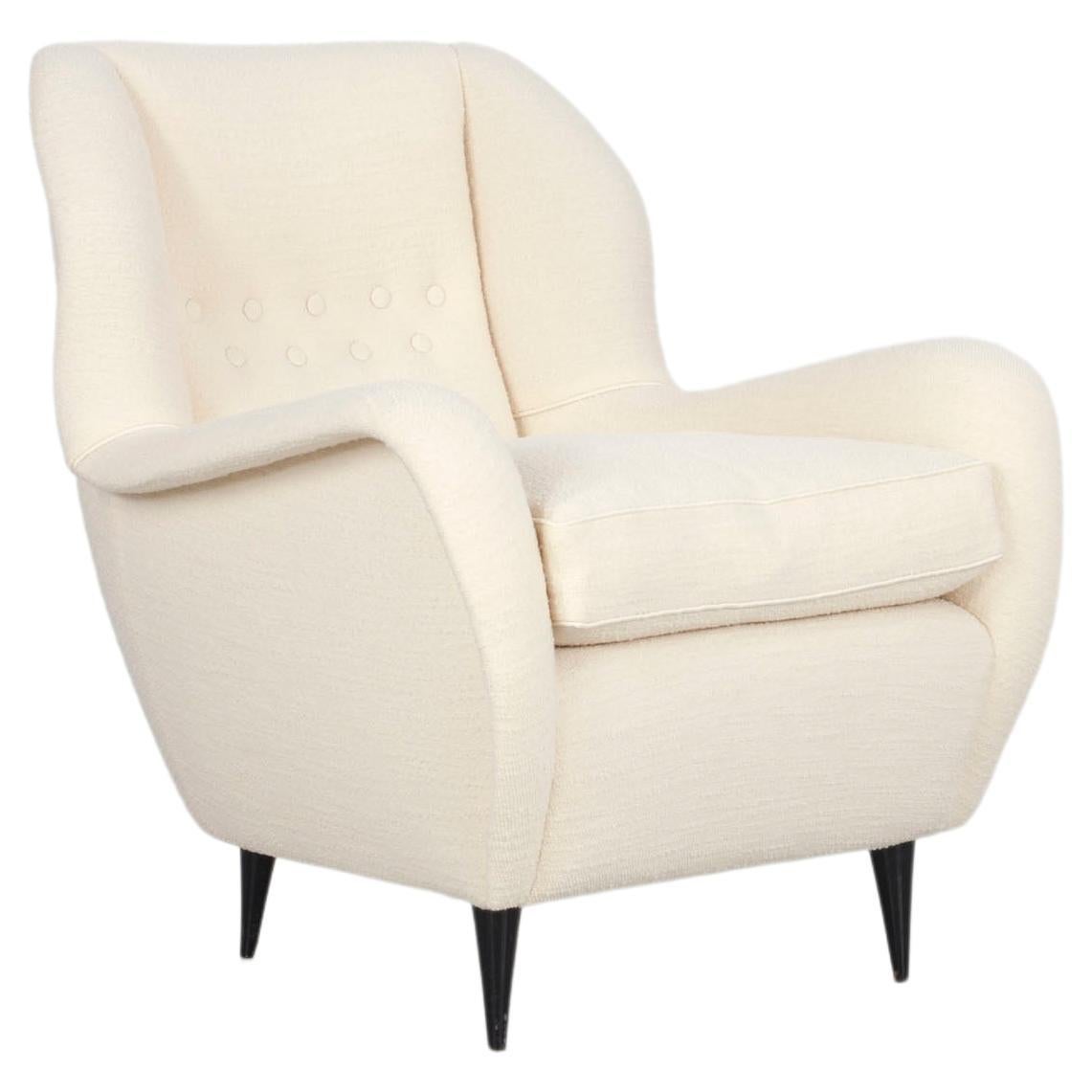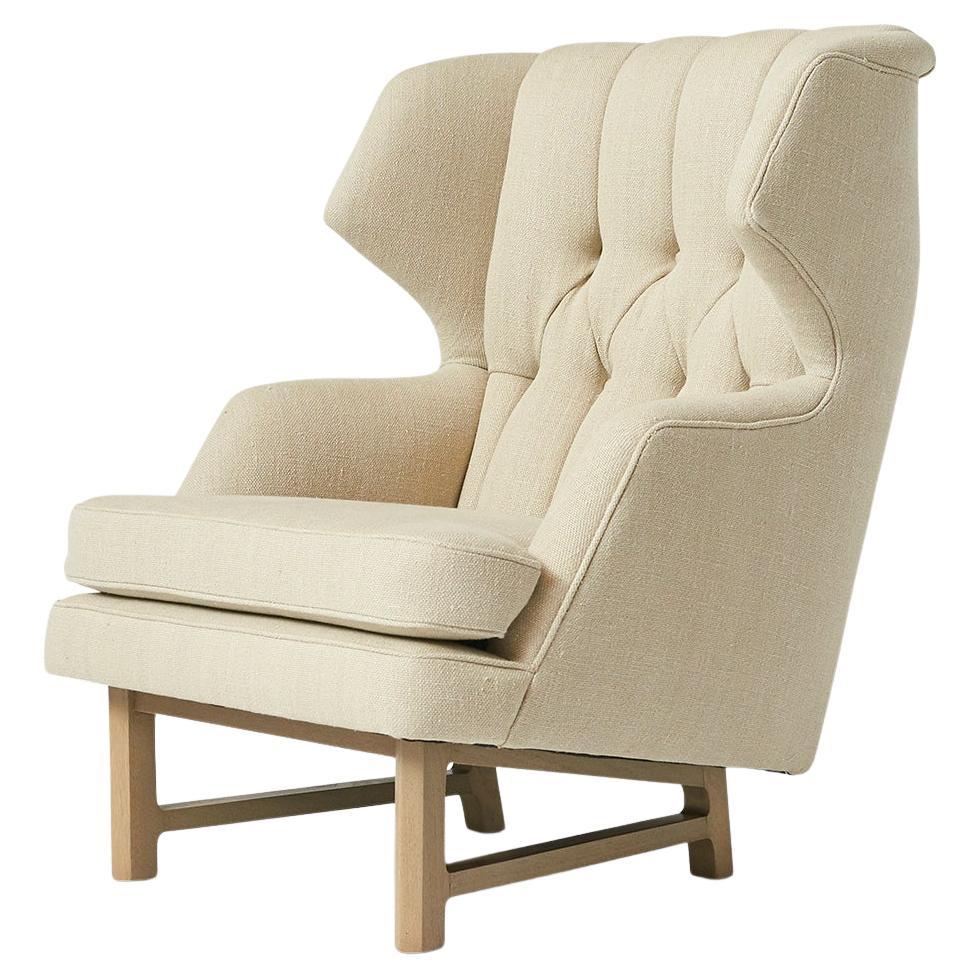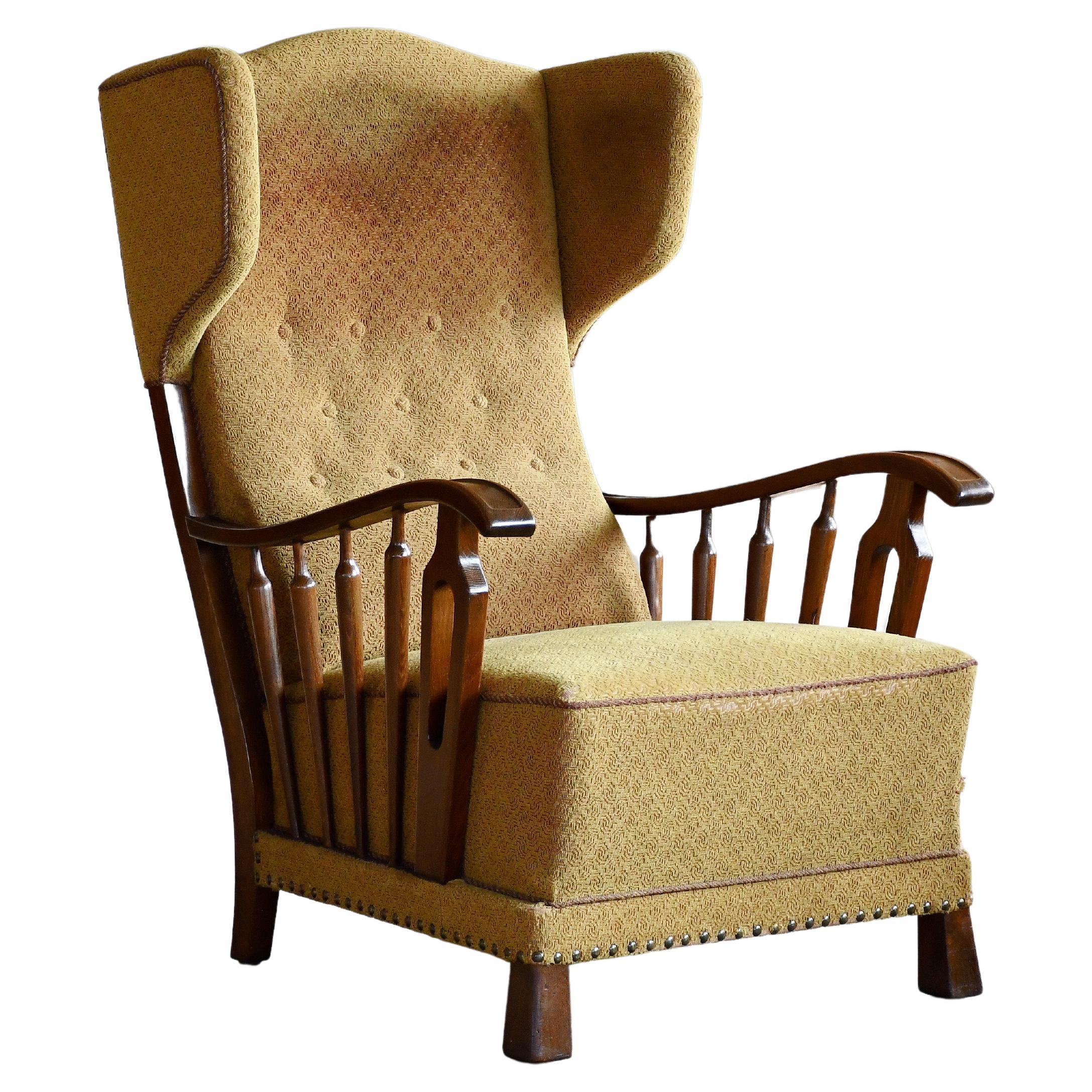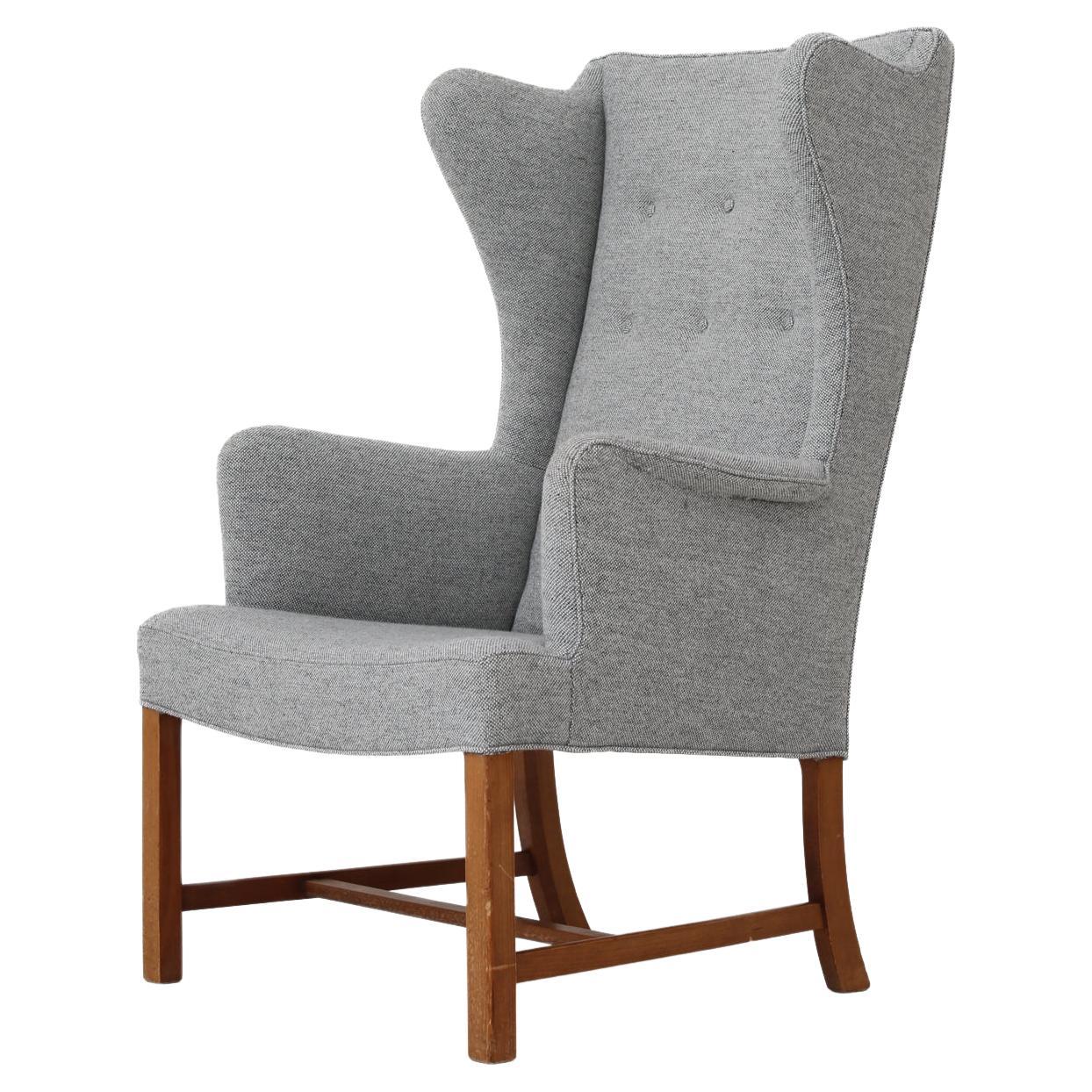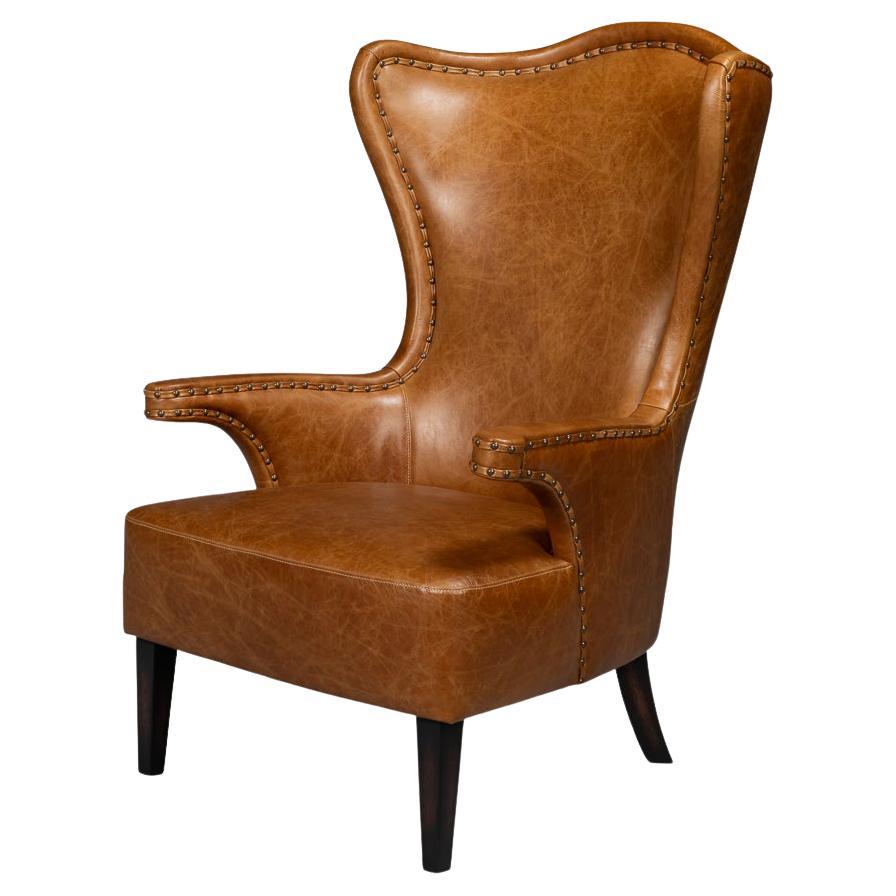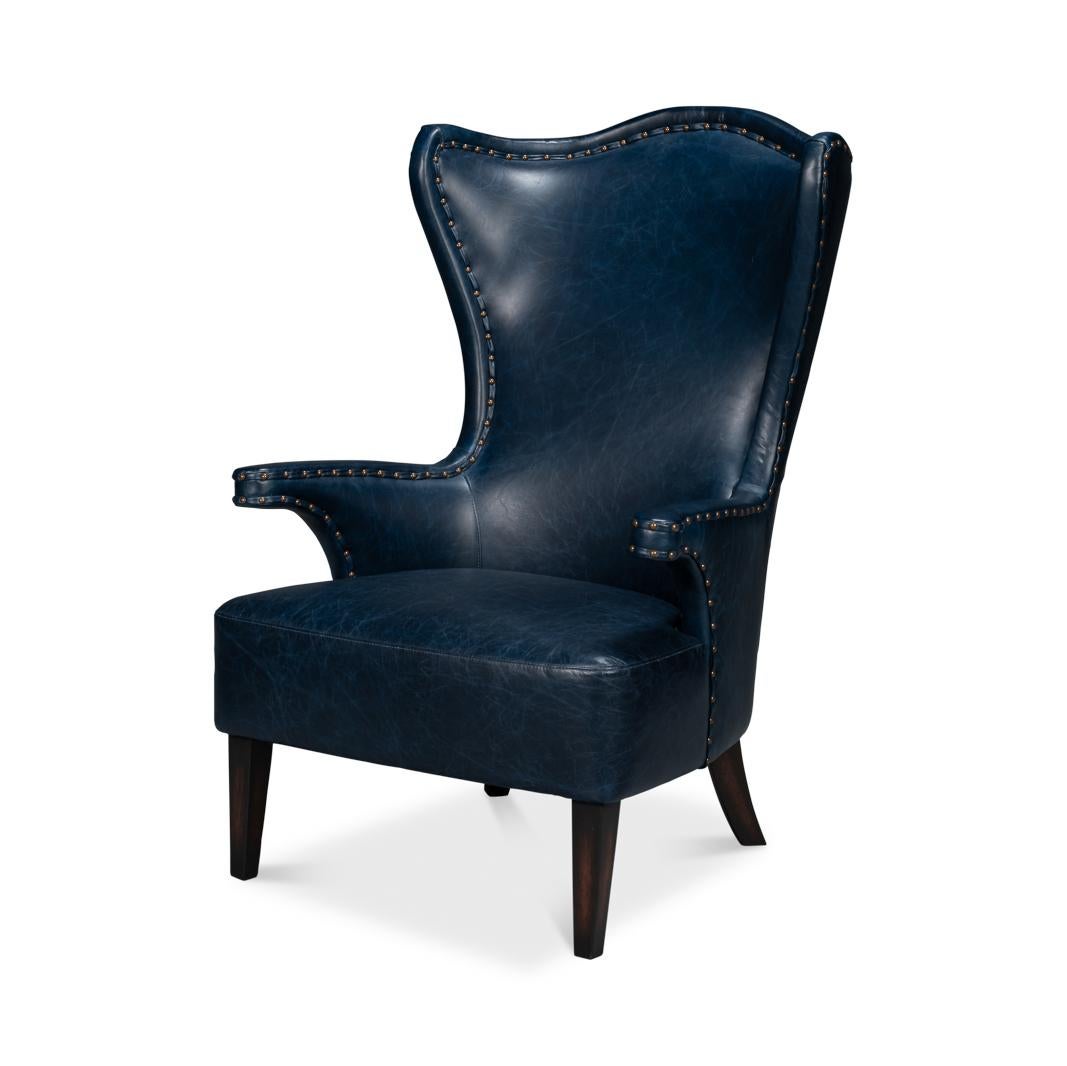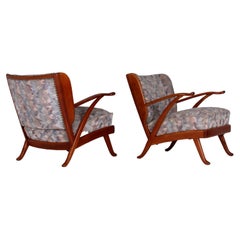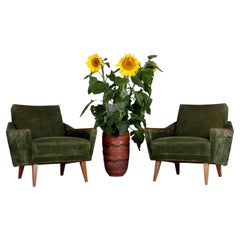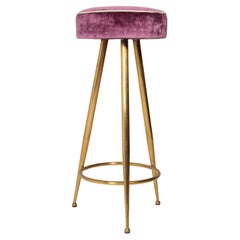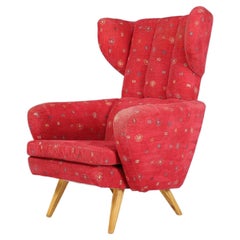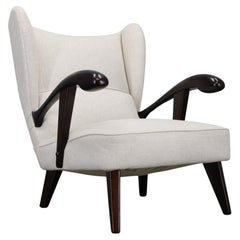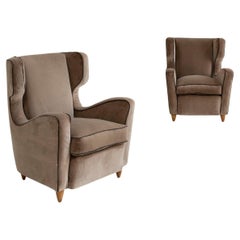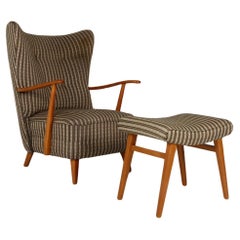
1950s wing back arm chair & ottoman extremely comfy solid make beech exc condit
View Similar Items
Want more images or videos?
Request additional images or videos from the seller
1 of 21
1950s wing back arm chair & ottoman extremely comfy solid make beech exc condit
About the Item
- Dimensions:Height: 40.56 in (103 cm)Width: 28.75 in (73 cm)Depth: 27.56 in (70 cm)Seat Height: 16.54 in (42 cm)
- Sold As:Set of 2
- Style:Mid-Century Modern (Of the Period)
- Materials and Techniques:
- Place of Origin:
- Period:
- Date of Manufacture:1957
- Condition:
- Seller Location:Landshut, DE
- Reference Number:1stDibs: LU8587237288252
About the Seller
5.0
Gold Seller
Premium sellers maintaining a 4.3+ rating and 24-hour response times
1stDibs seller since 2023
20 sales on 1stDibs
Typical response time: 2 hours
Authenticity Guarantee
In the unlikely event there’s an issue with an item’s authenticity, contact us within 1 year for a full refund. DetailsMoney-Back Guarantee
If your item is not as described, is damaged in transit, or does not arrive, contact us within 7 days for a full refund. Details24-Hour Cancellation
You have a 24-hour grace period in which to reconsider your purchase, with no questions asked.Vetted Professional Sellers
Our world-class sellers must adhere to strict standards for service and quality, maintaining the integrity of our listings.Price-Match Guarantee
If you find that a seller listed the same item for a lower price elsewhere, we’ll match it.Trusted Global Delivery
Our best-in-class carrier network provides specialized shipping options worldwide, including custom delivery.More From This Seller
View AllMidcentury set of 2 solid cherry wood wingback armchairs & sofa Karl Nothhelfer
Located in Landshut, BY
just beautiful
SET of Sofa & 2 Wingback Armchairs
by Prof. Karl Nothelfer - Designed in 1957
maker: Schörle & Gölz in Stuttgart - Bad Cannstatt
solid Cherry Wood
new upholstery and fabrics in 1998 according to last owner ( since then just in use for 2 years so upholstery is perfect ! )
Seatrests can be removed - and fixed by clips on belts
- high class -
measurements:
easy chair is 70cm wide ~ sofa is 178cm wide
both: seating height 40cm ~ seating depth: 57cm
condition - all firm and in very good condition - no damages
furniture have fully been accurately cleaned ::
- 3 steps: A: air pistol - B: industrial hoover - C: latest Kärcher "wash&hoover" technology
- woods have been polished several times
note: please ask for shipping quote by sending us your postcode/destination
Prof. Karl Nothelfer
* 14 June 1900 ~~ + 20 May 1980
Since the beginning of the 15th century, the Nothelfer family of carpenters has been continuously resident in the former
town of Überlingen without interruption. Every carpenter at that time mastered
all the possibilities of woodworking: so did the Nothelfer. They could carpenter,
even carve altars and figures, and set them in gold, silver and paint.
(churches in Owingen and Hödingen]. Some family members lived and worked
and worked in Hedingen or Hödingen,like today the jubilarian Karl Nothelfer (this in 1975).
His father, Karl Anton Nothelfer, as the eldest of seven siblings, was able to take over his father's carpentry business in Überlingen.
Karl Anton Nothelfer, the eldest of seven siblings, was unable to take over his father's carpentry business in Überlingen.
He instead moved to the industrial town of Singen with his young wife Rosalie, née Hanner, from the
from Hohenzollern in 1896 and moved to the former Poststraße and founded his own carpenter's workshop.
He had a highsense of quality and form and was already a member of the German Werkbund before 1914.
Karl Nothelfer and his three siblings grew up in such air.
After attending school and the secondary school in Singen, the young Karl learned the carpenter's trade in his father's workshop then moved on to the Badische Landes-Kunstschule in Karlsruhe,
where he studied architecture. At that time the well-known furniture professor also worked there
Fritz Spannagel, born in Freiburg in 1891, who settled in 1938 at Ittendorf Castle near Meers-
burg (died 1957). In 1928, the gifted young architect received a teaching assignment at the
at the Karlsruhe School of Art, but followed his teacher Spannagel to Berlin in the same year.
Berlin. Here he worked from 1928-1945 as a teacher - appointed professor in 1931 - at the
Berlin Tischler-Schule, the later Bauschule für Raumgestaltung.
The furniture he created in Berlin became internationally known through many exhibitions and lectures.
nationally known and influential. His furniture creations ushered in a new era in German and
a new era in German and European furniture design. At the world exhibition in Paris
1937 Prof. Nothelfer was awarded the Golden Medal for his work in the furniture sector.
for his work in the furniture sector. A first summary and balance of his work on furniture is given in his standard work
1942 published standard work "Das Sitzmöbel", the first compendium of its kind in the world.
world. In 1950 he published his second work "Furniture". Both books and a
series of brochures were published by Verlag Otto Maier, Ravensburg.
Karl Nothelfer continued to work intensively on the design of seating furniture in the years after 1945.
In 1950 he succeeded in the important invention of the two-legged skid-base chair, which has been
orthopedically - anatomically tested thousands of times - has become accepted all over the world today.
Even the most distinguished American furniture companies such as Miller or Knoll-International
use the skid as the main theme for desks and chairs. At the same time, N. had a groundbreaking
in the redesign of German school furniture and seating for industry.
industry. He succeeded in adapting his furniture forms, which originated in wood and handicraft, to the modern technical
modern technical possibilities of the industry. He thus became the great refor-
of schoolroom furnishings. The architect Nothelfer thinks about himself,
that he made his main contribution in the field of seating furniture, although this was not
was not really his profession.
After the war, Prof. Nothelfer, like so many others, had to start all over again. He settled
settled in his home town of Lake Constance in Hödingen in 1945 as a freelance architect and was
and was involved in all areas of construction in the years after the war. As early as 1935, he had given many
the example of American prefabricated buildings and recommended serial house
and recommended it at a time when no one in Germany was even thinking about mass production. Now he developed
he developed several types of mass-produced houses, which were manufactured in Baiersbronn.
of which more than 800 houses were built in France alone (types Paris, Provence, Normandie).
were built. At that time [1946], as part of the reparations in Strasbourg, there was an exhibition of houses with Swedish, Danish, and French designs.
with Swedish, Danish, Finnish, English and German houses, where the French occupation
for which 6 different types were sent from the French occupation zone, the
Nothelfer's house type was considered the top of this exhibition.
Karl Nothelfer was also involved in the development of chipboard. In 1946, together with others in Munich, he founded the first
magazine "Bauen und Wohnen" ("Building and Living") after the war and remained its co-editor for many years.
co-editor of this magazine for many years. By presenting his own work, he has here
interpreted what the essence of the magazine wanted to be: Building, in order to live in it, in order to live as a human being and humanly in the built. Karl Nothelfer planned his houses
furniture ground plan, from the need for living. In 1948 he was appointed honorary senator of the State Building
school in Holzminden.
Karl Nothelfer did not build much in Singen. The first post-war house was Haus
Fahr on the slope of the Hohentwiel (Domäne); the building material came from a demolished
log house that a French officer had built for himself on the Schie- nerberg.
nerberg. In 1952, he also built the administration building of the aluminum rolling mill in Singen.
rolling mills in Singen, with relief and wall painting by C. G. Becker. In Überlingen he built
In Überlingen he built, among others, the Buchinger Sanatorium, the Riese+ Hähnel radio house and
various reconstructions in the old town: Haus Kitt with the Glockenspiel, the Haus mit dem
Bacchus in the Überlingen village, the Dolphin Fountain in Hödingen (1975). Probably the most beautiful
Haus Nothelfers, the Haus Himmelheber, stands in Baiersbronn-Tonbach. On the airfield
Mengen, Nothhelfer built the casino building with the 30 square meter faience painting Ikarus by
C. G. Becker. In 1954 he founded a second office with architect Hans Schwingen in Düsseldorf.
Office, which primarily fertilized the housing construction, true to the motto:from the inside to
planning from the outside. The Minister of Housing awarded a prize to the best social housing in North Rhine-
Westphalia; it was from the Nothelfer+Schwingen studio in Düsseldorf. Also the idea of
new idea of home ownership was also promoted by Nothelfer+Schwingen.
promoted by Nothelfer+Schwingen. On the occasion of the red jubilee of the law about condominium ownership
Nothelfer gave a lecture in Essen in 1961 on condominium ownership in Europe (published as a brochure).
published as a brochure]. From Düsseldorf, among many others, in the silk city...
Category
Vintage 1950s German Mid-Century Modern Living Room Sets
Materials
Fabric, Cherry, Upholstery
pair of 1960s lounge chairs green velvet - beech WG solid make uph. easy chairs
Located in Landshut, BY
This set of two West German lounge chairs is in very good condition
It was made in the mid 1960s
The armrests have been professionally restored (sanded - stained and lacquered tw...
Category
Mid-20th Century German Mid-Century Modern Lounge Chairs
Materials
Wood, Velvet, Beech
art nouveau oak stool chair Jugendstil Rabenau embroidery a. 1910 exc condition
Located in Landshut, BY
solid built oak
Jugendstil
CHAIR
made in Rabenau / Saxonia
upholstered with care - fitted with hand embroidered jute fabric
Rabenau's chairmaking tradition is almost 400 years ol...
Category
Vintage 1910s German Art Nouveau Chairs
Materials
Wool, Jute, Oak
Original Italian BAR / COUNTER STOOL 1950s Solid Brass rosé Velvet upholstered
Located in Landshut, BY
The stool is of Italian origin and was produced in the 1950s.
It is composed of solid brass, velvet, and new upholstery.
The new upholstery consists of high-quality foam and is co...
Category
Vintage 1950s Italian Mid-Century Modern Pedestals and Columns
Materials
Brass
1950s Studio Keramik floor Vase series GARDA Atelier Huber Roethe Landshut
Located in Landshut, BY
STUDIO KERAMIK FLOOR VASE
Atelier Herta Huber Roethe Landshut 1950s
marked "HR"
Manufacturer ATELIER HUBER ROETHE
Design Period 1950 to 1959
Production Period 1950 to 1959
Count...
Category
Vintage 1950s German Mid-Century Modern Vases
Materials
Pottery
1950s Studio Keramik floor Vase Atelier Huber Roethe Landshut 1959 with inlet
Located in Landshut, BY
STUDIO KERAMIK FLOOR VASE
Atelier Herta Huber Roethe Landshut 1950s
(it´s been created by an artist who has worked in their Atelier : marked "BR")
Manufacturer ATELIER HUBER ROETHE...
Category
Vintage 1950s German Mid-Century Modern Vases
Materials
Pottery
You May Also Like
Wing Back Lounge Chair in Red Upholstery, Praque 1950s
Located in Almelo, NL
Wing Back Lounge chair in red Upholstery, Praque 1950s
Large midcentury wingback armchair in red upholstery, Czech republic 1950s. This armchair would be an eye-catching addition ...
Category
Vintage 1950s Czech Mid-Century Modern Armchairs
Materials
Fabric, Wood
1950s Restored Wing Chair, Czechoslovakia
Located in Praha, CZ
- Carefully refurbished
- Newly upholstered in natural fiber based fabric
- Stained solid beech wood
- sturdy and stable
Category
Vintage 1950s Czech Mid-Century Modern Wingback Chairs
Materials
Fabric, Wood, Beech
Pair of Melchiorre Bega Wing Chairs, 1950s
By Melchiorre Bega
Located in Piacenza, Italy
Elegant pair of wing chairs, designed by Melchiorre Bega in the 1950s. Both chairs are made with dove grey velvet upholstery and solid wood legs. The velvet is embellished with a thi...
Category
Vintage 1950s Italian Mid-Century Modern Wingback Chairs
Materials
Velvet, Wood
$8,706 / set
Pair of Italian 1950's Leather High Back Wing / Lounge Chairs
Located in New York, NY
A pair of sculptural high-back Italian wing chairs, with beautifully curved arm and back supports, supported on splayed and tapered black painted metal and brass legs. The chairs exp...
Category
Vintage 1950s Italian Mid-Century Modern Lounge Chairs
Materials
Metal, Brass
Cream Color Reupholstered Italian Wing Chair of the 1950s
Located in Wolfurt, AT
Italian wing chair with pure new wool cover from the 50s. The armchair has been completely restored. The metal springs of the seat have been re-tied, the foam has been rebuilt and it...
Category
Vintage 1950s Italian Mid-Century Modern Armchairs
Materials
Textile, Wood
Pair of Louis XVI Jansen Style Wing Back, Arm Chairs, Scalamandre Upholstery
By Maison Jansen
Located in Manhasset, NY
Pair of Louis XVI Jansen Style Wing Back, Arm Chairs, Scalamandre Upholstery,
Pair of Late 19th/Early 20th Century Louis XVI Style Bergere Chairs in a clean fine Scalamandre Upholst...
Category
Mid-20th Century French Louis XVI Wingback Chairs
Materials
Textile, Wood
Recently Viewed
View AllMore Ways To Browse
Faux Bamboo Brass Shelf
Faux Bamboo Vanity
Faux Book End Table
Faux Coral Table
Faux Malachite Dining Table
Felix Forest
Fiberglass Pool Furniture
Fibreglass Sofa
Firmin Didot
Flamingo Bar
Flat Bottom Boat
Floral Slipper Chair
Florence Knoll Parallel
Florence Knoll Table Round
Fontana Arte Glass Tray
Footed Compotes
Four Seasons Cherubs
Frame Pre Raphaelite
